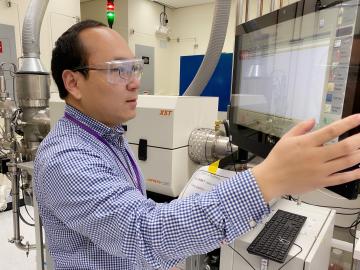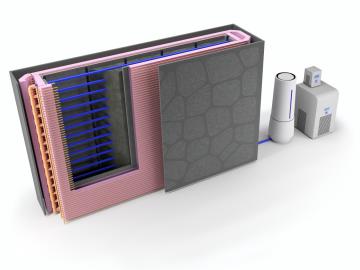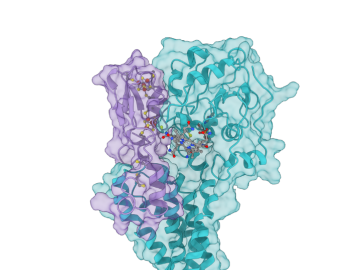
Filter News
Area of Research
- Advanced Manufacturing (6)
- Biological Systems (1)
- Biology and Environment (6)
- Building Technologies (1)
- Computational Engineering (1)
- Computer Science (8)
- Energy Science (44)
- Fusion and Fission (1)
- Fusion Energy (3)
- Isotopes (1)
- Materials (24)
- Materials for Computing (1)
- National Security (8)
- Neutron Science (12)
- Nuclear Science and Technology (4)
- Quantum information Science (4)
- Supercomputing (39)
News Type
News Topics
- (-) 3-D Printing/Advanced Manufacturing (27)
- (-) Artificial Intelligence (16)
- (-) Biomedical (24)
- (-) Computer Science (62)
- (-) Grid (13)
- (-) Mercury (3)
- (-) Microscopy (10)
- (-) Security (5)
- Advanced Reactors (16)
- Big Data (18)
- Bioenergy (12)
- Biology (7)
- Biotechnology (2)
- Chemical Sciences (2)
- Clean Water (7)
- Composites (3)
- Coronavirus (16)
- Critical Materials (1)
- Cybersecurity (6)
- Energy Storage (24)
- Environment (34)
- Exascale Computing (4)
- Frontier (1)
- Fusion (18)
- High-Performance Computing (1)
- Isotopes (8)
- Machine Learning (9)
- Materials Science (36)
- Mathematics (2)
- Molten Salt (6)
- Nanotechnology (12)
- Neutron Science (39)
- Nuclear Energy (42)
- Physics (14)
- Polymers (8)
- Quantum Science (11)
- Space Exploration (7)
- Summit (16)
- Transportation (26)
Media Contacts

New capabilities and equipment recently installed at the Department of Energy’s Oak Ridge National Laboratory are bringing a creek right into the lab to advance understanding of mercury pollution and accelerate solutions.

Growing up in Florida, Emma Betters was fascinated by rockets and for good reason. Any time she wanted to see a space shuttle launch from NASA’s nearby Kennedy Space Center, all she had to do was sit on her front porch.

The Transformational Challenge Reactor, or TCR, a microreactor built using 3D printing and other new advanced technologies, could be operational by 2024.

Scientists at Oak Ridge National Laboratory and the University of Tennessee designed and demonstrated a method to make carbon-based materials that can be used as electrodes compatible with a specific semiconductor circuitry.

About 60 years ago, scientists discovered that a certain rare earth metal-hydrogen mixture, yttrium, could be the ideal moderator to go inside small, gas-cooled nuclear reactors.

Scientists at ORNL and the University of Nebraska have developed an easier way to generate electrons for nanoscale imaging and sensing, providing a useful new tool for material science, bioimaging and fundamental quantum research.

Oak Ridge National Laboratory researchers used additive manufacturing to build a first-of-its kind smart wall called EMPOWER.

The Department of Energy has selected Oak Ridge National Laboratory to lead a collaboration charged with developing quantum technologies that will usher in a new era of innovation.

It’s a new type of nuclear reactor core. And the materials that will make it up are novel — products of Oak Ridge National Laboratory’s advanced materials and manufacturing technologies.

A team led by ORNL created a computational model of the proteins responsible for the transformation of mercury to toxic methylmercury, marking a step forward in understanding how the reaction occurs and how mercury cycles through the environment.


